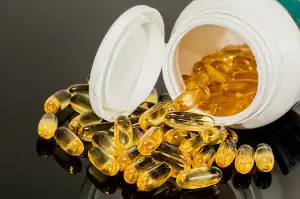Discover the Benefits of a Soft Splint: Your Guide to Understanding this Essential Medical Device

Soft splints are essential medical devices used in the treatment and management of various musculoskeletal conditions. They are designed to provide support, stability, and protection to injured or weakened body parts such as joints, muscles, or ligaments. Soft splints are made from flexible materials like foam, fabric, or neoprene, allowing for a comfortable fit while still providing the necessary immobilization. These versatile devices play a crucial role in promoting healing and preventing further damage in individuals recovering from injuries or undergoing rehabilitation programs.
Definition and Composition of Soft Splints
Soft splints are medical devices designed to provide support and immobilization to injured or weak body parts. They are typically made of soft, flexible materials such as foam, fabric, or plastic. These materials allow for a comfortable fit while still providing the necessary stability and protection. Soft splints come in various shapes and sizes to accommodate different body parts and injuries, making them versatile and adaptable for a wide range of medical conditions.
Purpose and Benefits of Soft Splints
Soft splints are essential medical devices designed to provide support, stability, and protection to injured body parts. They serve the purpose of immobilizing a specific area while allowing for some degree of movement to promote healing. The benefits of soft splints include reducing pain and swelling, preventing further injury, and aiding in the recovery process by maintaining proper alignment of the affected limb or joint. Additionally, soft splints can help improve overall comfort and quality of life for patients during their rehabilitation journey.
Conditions Treated with Soft Splints
Soft splints are versatile medical devices used to treat a variety of conditions. They are commonly employed in the management of arthritis, tendonitis, carpal tunnel syndrome, and other musculoskeletal injuries. Soft splints provide support and stability to the affected area, reducing pain and inflammation while promoting healing. Additionally, they can be used post-operatively to immobilize joints and facilitate recovery. By maintaining proper alignment and reducing stress on injured tissues, soft splints play a crucial role in the treatment of these conditions.
How to Use and Care for Soft Splints
Soft splints are easy to use and require proper care to ensure their effectiveness in medical treatment. To use a soft splint, first, make sure the affected area is clean and dry. Then, gently place the splint over the injured area, ensuring it fits snugly but not too tight. It's important to follow any specific instructions provided by your healthcare provider for wearing the splint, such as how long to wear it each day.
To care for your soft splint, regularly check for any signs of wear or damage. Clean the splint according to the manufacturer's instructions using mild soap and water, and allow it to air dry completely before reapplying. Avoid exposing the splint to excessive heat or direct sunlight, as this can cause damage to the material.
If you experience any discomfort or notice any skin irritation while wearing the soft splint, remove it immediately and consult your healthcare provider. Proper usage and care of soft splints are essential for promoting healing and providing support to the injured area.
Soft splints play a crucial role in medical treatment by providing support and stability to injured or weakened body parts. Their ability to reduce pain, inflammation, and promote healing makes them an essential tool in rehabilitation and recovery processes. By immobilizing the affected area while allowing for some movement, soft splints help prevent further damage and aid in restoring functionality. Healthcare professionals often recommend soft splints as part of a comprehensive treatment plan for various conditions, highlighting their significance in enhancing patient outcomes and improving quality of life.
Published: 27. 03. 2024
Category: Food



